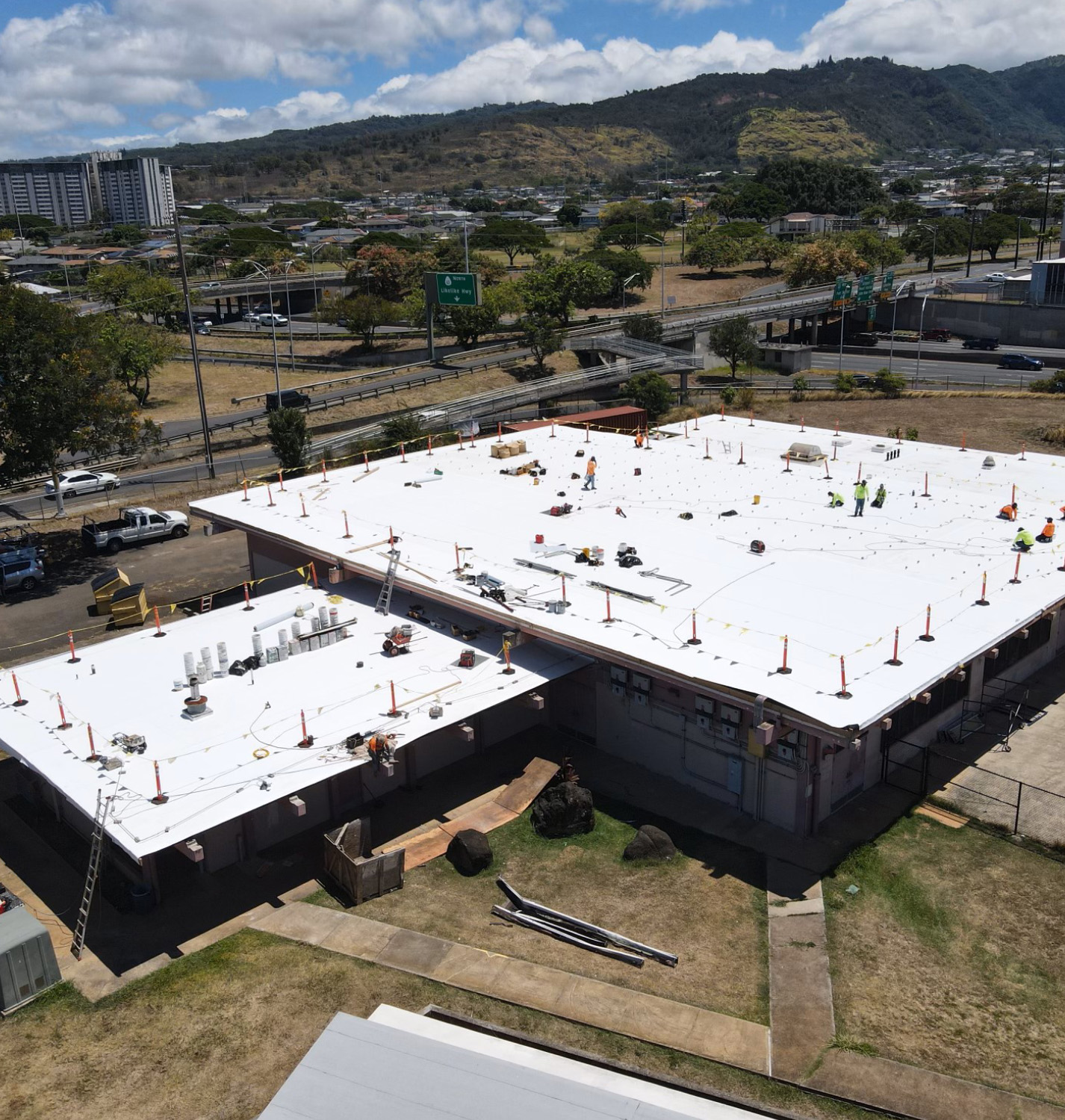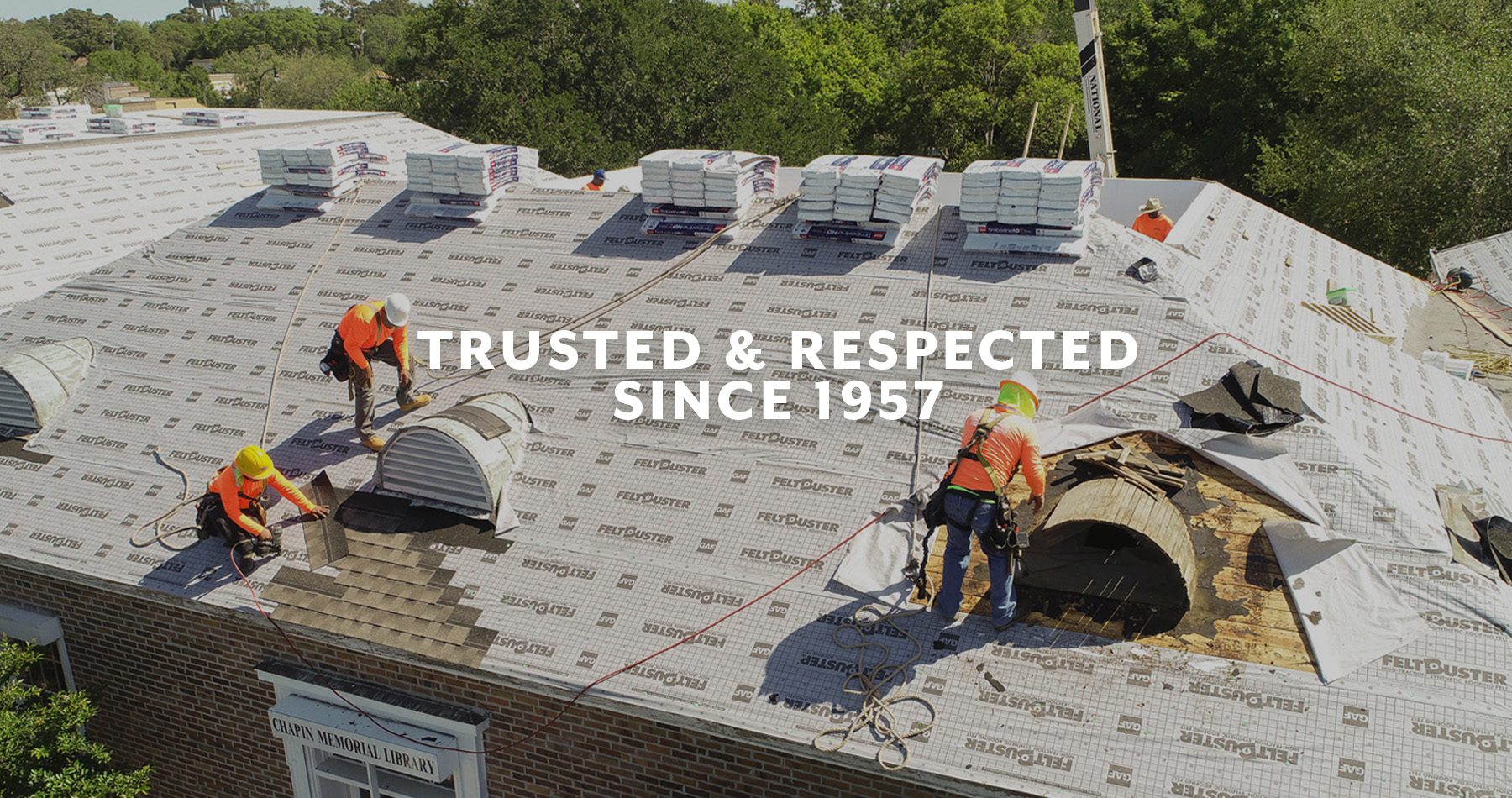Discover Typical Roof Issues and Exactly How to Address Them Efficiently
When it pertains to your roofing, identifying issues early can save you money and time. You could see water stains on your ceiling or broken roof shingles during your regular checks. Disregarding these signs can lead to bigger problems down the line. Comprehending how to identify and attend to these usual roofing problems is important for keeping your home's honesty. What certain actions should you take to guarantee your roofing remains in leading condition?
Recognizing Roofing System Leaks and Their Reasons

Following, analyze your roof from the outside. Look for missing out on or cracked tiles, rusted blinking, or damaged seamless gutters. Take notice of locations around chimneys, vents, and skylights, as these prevail leakage resources. If you find any one of these concerns, it's crucial to address them without delay.
During heavy rainfall, observe your roof covering for any kind of pooling water or drips. This can expose leaks that may not be noticeable during completely dry problems. By remaining watchful and consistently inspecting your roofing, you can catch leaks early and secure your home from additional damages.
Dealing With Missing or Damaged Shingles
When you notice missing out on or damaged tiles, it's vital to act rapidly to avoid additional problems. You'll want to recognize the extent of the damages, repair any missing roof shingles, and think about preventative maintenance suggestions to maintain your roof in leading shape. Taking these steps can conserve you money and time in the future.
Recognizing Tile Damages
Although tiles are made to endure the aspects, they can still endure damage over time, leading to potential leakages and costly repair services. To determine roof shingles damages, start by checking your roof covering for missing, split, or crinkled tiles. On a regular basis monitoring your roofing, particularly after extreme weather condition, can help you capture concerns early and keep the stability of your home.
Repairing Missing Out On Roof Shingles
After spotting shingle damage, the following step is addressing any type of missing out on or damaged roof shingles promptly to stop further problems. If you can, climb onto your roofing safely, wearing appropriate equipment. Taking action rapidly will help maintain your roofing system's integrity and prolong its lifespan.
Preventive Maintenance Tips
Just how can you maintain your roofing system in top form and avoid shingles from going missing or getting damaged? Normal examinations are crucial. Examine your roof covering at the very least two times a year and after extreme climate. Search for indicators of wear, such as curling, cracking, or loose roof shingles.
Maintain rain gutters clean and complimentary of particles to assure correct water flow and avoid roof shingles damage. Cut overhanging branches to lessen the danger of them scratching against your roofing during tornados.
Consider using a safety sealer to extend your roof shingles' life-span. If you observe any type of concerns, resolve them promptly to prevent costly repair services later. Taking these safety nets can save you time and money while guaranteeing your roof covering stays long lasting and dependable.
Understanding Roofing System Ventilation Issues
Correct roof ventilation is necessary for preserving the longevity and performance of your roof system, as it aids control temperature and moisture levels in your attic. Without sufficient ventilation, you might face concerns like excessive warmth buildup, causing early roof shingles deterioration, or raised humidity that can cause mold development and wood rot.
To examine your roof ventilation, look for indicators of getting too hot, such as distorted shingles or a warm attic room. Search for obstructed vents, which can limit airflow and catch warmth. You must ensure your intake and exhaust vents are balanced, enabling proper air exchange.
Dealing with these issues without delay can safeguard your roofing system and conserve you from costly repairs down the line. Remain positive in maintaining your roofing system's air flow to safeguard your home.
Dealing With Roof Moss and Algae Development
While you might value the natural look of moss and algae on your roofing, these organisms can lead to considerable problems if left untreated. Use a soft-bristle brush to delicately scrub away the moss and algae, being careful not to harm your roof shingles.
Following, take into consideration using a specialized roofing system cleaner or a mix of water and bleach to kill staying spores. Rinse thoroughly to avoid any kind of chemical damages. Furthermore, mount zinc or copper strips along the ridge of your roof covering. As rainfall washes over these steels, it produces a protective obstacle versus future development. Normal examinations and maintenance will certainly aid protect against moss and algae from returning, ensuring your roof stays in excellent form for several years to find.
Fixing Tornado Damage and Wind Problems
After a storm, it's essential to examine your roof for damage triggered by high winds and hefty rain. Beginning by checking for missing out on or damaged shingles, as these are common casualties. If you observe any kind of, it's important to change them quickly to prevent leakages. Next, examine the flashing around smokeshafts and vents; harmed flashing can cause water penetration.
Seek any type of sagging locations, which may indicate water build-up or architectural issues. If you find any particles, like branches or leaves, remove them thoroughly to avoid additional damage. If your rain gutters are clogged, clear them to ensure appropriate drain.

For small repair work, you could handle it yourself, yet don't hesitate to call a specialist for extensive damages. Keep in mind, acting rapidly can save you from larger issues down the line, so take that evaluation seriously and resolve any kind of concerns as quickly as feasible.
Acknowledging Signs of Structural Damage
How can you inform if your roofing system is struggling with structural damages? Beginning by searching for visible sagging or dips in your roofline. These signs indicate that the underlying structure might be endangered. Next, check for splits or voids in the wall surfaces or ceiling, as these can signal shifting or resolving due to roofing system concerns. Pay focus to leaks or water spots, especially in areas where the roofing meets walls. If you see missing out on or broken roof shingles, it's necessary to address them rapidly, as they can subject your roof to further damages. Likewise, inspect your attic for any kind of signs of daytime glimpsing through, which can imply your roofing's integrity goes to danger. Lastly, pay attention for unusual creaking or popping audios, as they might suggest architectural stress and anxiety. If you discover any of these signs, it's time to speak with a roofing professional for a detailed evaluation.
Routine Maintenance Tips for Durability

Regular Evaluations Relevance
Since a roof covering is your home's first line of protection against the aspects, routine assessments are necessary for keeping its stability (roofers oahu). You must check your roof covering at the very least twice a year, preferably in spring and loss, to capture prospective concerns early. Search for missing or damaged tiles, signs of leaks, and any type of debris that can cause problems. Pay very close attention to locations around chimneys, vents, and blinking, as these are typical vulnerable points. If you discover anything unusual, do not be reluctant to call a specialist for a comprehensive evaluation. Staying up to date with these inspections can stop expensive repair work down the line and lengthen your find roofing system's lifespan, ensuring your home stays protected for many years to find.
Appropriate Seamless Gutter Maintenance
Regular roof evaluations naturally lead to the relevance of proper rain gutter maintenance. Inspect your seamless gutters for leaks or corrosion; they can create water damages to your roof and home. By adhering to these ideas, you'll prolong your gutters' life expectancy and safeguard your roof covering.
Often Asked Questions
Exactly How Can I Pick the Right Roof Product for My Home?
To pick the appropriate roofing product for your home, think about environment, toughness, and looks. Study alternatives like asphalt shingles, steel, or tile. Consider upkeep needs and spending plan to find what matches you best.
What Are the Signs I Required a Roofing System Substitute As Opposed To Repair?
If you observe extensive leaks, drooping, or missing shingles, you might need a roofing substitute. Also, if your roof's nearing its life expectancy or has considerable damage, it's time to ponder a complete substitute as opposed to just repairs.
Just how Commonly Should I Arrange Specialist Roof Evaluations?
You must schedule professional roof inspections at least once a year, weblink preferably in spring or autumn. This helps capture prospective concerns early, guaranteeing your roof covering stays in good condition and prolonging its lifespan.
Can I Mount a New Roofing System Over My Old One?
You can mount a new roof over your old one, however it's important to inspect regional building ordinance and ensure the existing roofing system's condition is sound. This approach can conserve time and money, but take into consideration prospective problems.
What Is the Average Life-span of Various Roof Materials?
The standard life-span varies by material: asphalt roof shingles last 15-30 years, steel roofings can last 40-70 years, while tile or slate roofings might surpass 50 years. Pick sensibly based on your environment and budget.
Conclusion
By staying attentive and addressing common roofing issues quickly, you can protect your home and prolong your roof covering's life-span. With a little regular maintenance, you'll not only secure your financial investment however likewise delight in tranquility of mind knowing your roof is see in top shape.